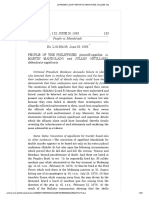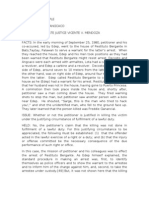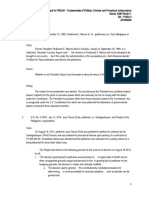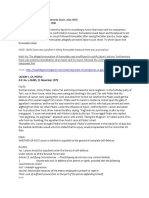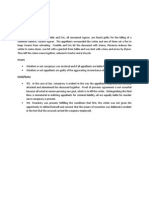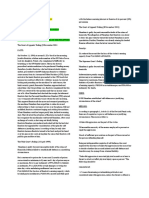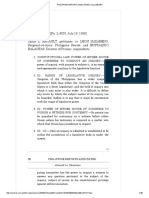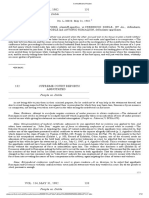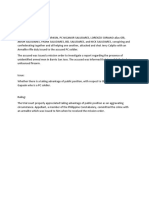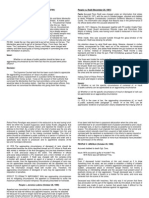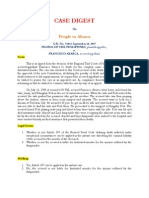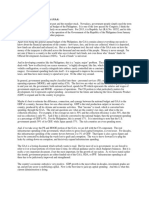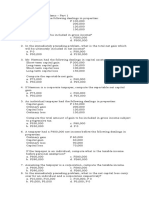People vs.
Loreno
GR no. L-54414, July 9, 1984
Digest by: Calabia, Harvey
Topic:
THAT ADVANTAGE BE TAKEN BY THE OFFENDER OF HIS PUBLIC POSITION
Doctrine of the case:
"Taking Advantage of Public Position"
Facts of the case:
Cic Loreto Gapasin, a member of the Philippine Constabulary (PC), was
accused of murder, along with several other individuals. The victim, Jerry
Calpito, was shot and killed by Gapasin using an Armalite rifle issued to him
as a PC soldier. The trial court found Gapasin guilty of murder qualified by
treachery and appreciated the aggravating circumstances of taking
advantage of public position and evident premeditation.
Issue:
WON the aggravating circumstance of "taking advantage of public position" was properly
appreciated. YES, it is.
Ruling:
The Supreme Court upheld the trial court's decision and affirmed the
appreciation of the aggravating circumstance. The Court reasoned that
Gapasin, as a PC soldier, had access to the Armalite rifle due to his public
position. He used this weapon, issued to him for official purposes, to commit
the crime. The Court held that the use of the Armalite rifle was directly
related to Gapasin's public position and that he took advantage of his official
capacity to facilitate the commission of the crime.
Questions:
1. What are the elements of the aggravating circumstance of "taking
advantage of public position" under Philippine law?
The Supreme Court in People vs. Loreno (G.R. No. L-54414, July 9,
1984) 1[2][3][4][5] considered several pieces of evidence to determine
that Loreno and Marantal did not act under compulsion of irresistible
force or uncontrollable fear:
Active Participation: The Court noted that both Loreno and Marantal
� actively participated in the robbery and rape. Loreno was involved in
tying up the victims, ransacking the house, and even attempted to
molest one of the rape victims. This active participation was seen as
inconsistent with their claim of being mere instruments of the armed
men.
Lack of Resistance: The Court found that Loreno and Marantal did not
make any attempt to resist the alleged armed men or to escape during
the crime. They did not show any signs of fear or distress that would
indicate they were acting under duress.
Opportunity to Escape: The Court highlighted that Loreno and Marantal
had multiple opportunities to escape or defend themselves during the
crime. They could have resisted the alleged armed men or fled the
scene when they had the chance. Their failure to do so contradicted
their claim of being powerless to resist.
Inconsistent Testimony: The Court also considered inconsistencies in
the testimonies of Loreno and Marantal. Their accounts of the events
and the actions of the alleged armed men were found to be
contradictory and unreliable.
2. What is the ruling of the court in this case?
The Supreme Court rejected the defense of compulsion of irresistible
force. The Court found that Loreno and Marantal's actions, including their
active participation in the crimes and lack of any attempt to escape or
defend themselves, contradicted their claim of being under duress.
The Court emphasized that the accused must demonstrate that they had no
opportunity to escape or defend themselves in equal combat. In this case,
the Court found that Loreno and Marantal had opportunities to resist or
escape but chose not to do so.








